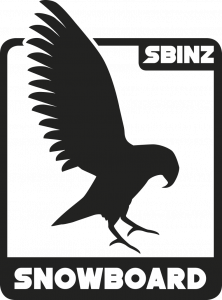Advanced Turns
When making advanced turns there are two general ways to release pressure as we move towards an edge change: we can either extend vertically and move laterally or flex vertically and move laterally.
The first way a rider can release edge pressure is by extending, meaning the rider will be at their most extended, tallest at edge change. This is known as an extended-edge-change movement pattern. The second way a rider can release edge pressure is by flexing, meaning the rider will be at their most flexed, smallest at the edge change. This is known as a flexed-edge-change movement pattern but can also be in the form of retraction or terrain unweighted turns. Both movement patterns, either extending or flexing, require controlled, smooth movements and are effective depending on the terrain, snow and the rider’s goals.
VIDEO: Advanced Turns with Greg Samson
Extended-Edge-Change
This is where the rider extends to release edge grip at the initiation of the turn. It can be used in a variety of turn sizes and shapes. The rider is at their most extended as the edge change occurs. This turn type is commonly used to introduce turning to first-timer snowboarders as extending or opening joints through the lower body allows the hips to move easily across the board laterally. Extended-edge-change turns can produce and manage large amounts of pressure at high speeds and place the rider’s centre of mass (COM) low and stable at the control and completion phase of the turn. For these reasons, extended-edge-change turns are not only used by beginners but are also a valuable tool in advanced turns and high performance riding.
Flexed-Edge-Change Turns
This is where the COM is lowered towards the board to decrease edge grip. With a flexed-edge-change the rider becomes lower and more stable through the initiation phase of the turn. These turns are often used in steep or rough terrain that threatens the rider’s balance. By moving from a flexed and stable position after the edge change riders can physically apply and manage pressure as they extend through the control and completion.
The sequence image below shows a flexed-edge-change…

Advanced Turn Characteristics
The characteristics of advanced turns include:
Retraction Turns
These turns are very similar in that the rider is flexed at edge change; however, as the name implies, the board is physically retracted towards the COM by pulling the legs in, as opposed to moving the COM down to the board. This turn provides a very quick and stable initiation and edge change; it is typically useful for smaller open turns, riding powder and other terrain and situations where quick direction and/or edge changes are required.
VIDEO: Retraction Turns with Jamie Middleton
Terrain Unweighted Turns
This is a variation on flexed-edge-change turns where the legs are softened as terrain features are ridden (e.g. a bump), causing the legs to flex or extend under the COM. Terrain is used to decrease edge grip, enabling the edge change to take place. Terrain unweighted turns are most commonly used in the bumps, gullies and undulating off-piste, but are also necessary when managing any changing terrain to maintain flow down the slope like a banked slalom or boardercross course. By definition, a terrain unweighting movement can be performed with an extended edge change as terrain is dropping away; however, this is rarely used in a sequence of turns.

